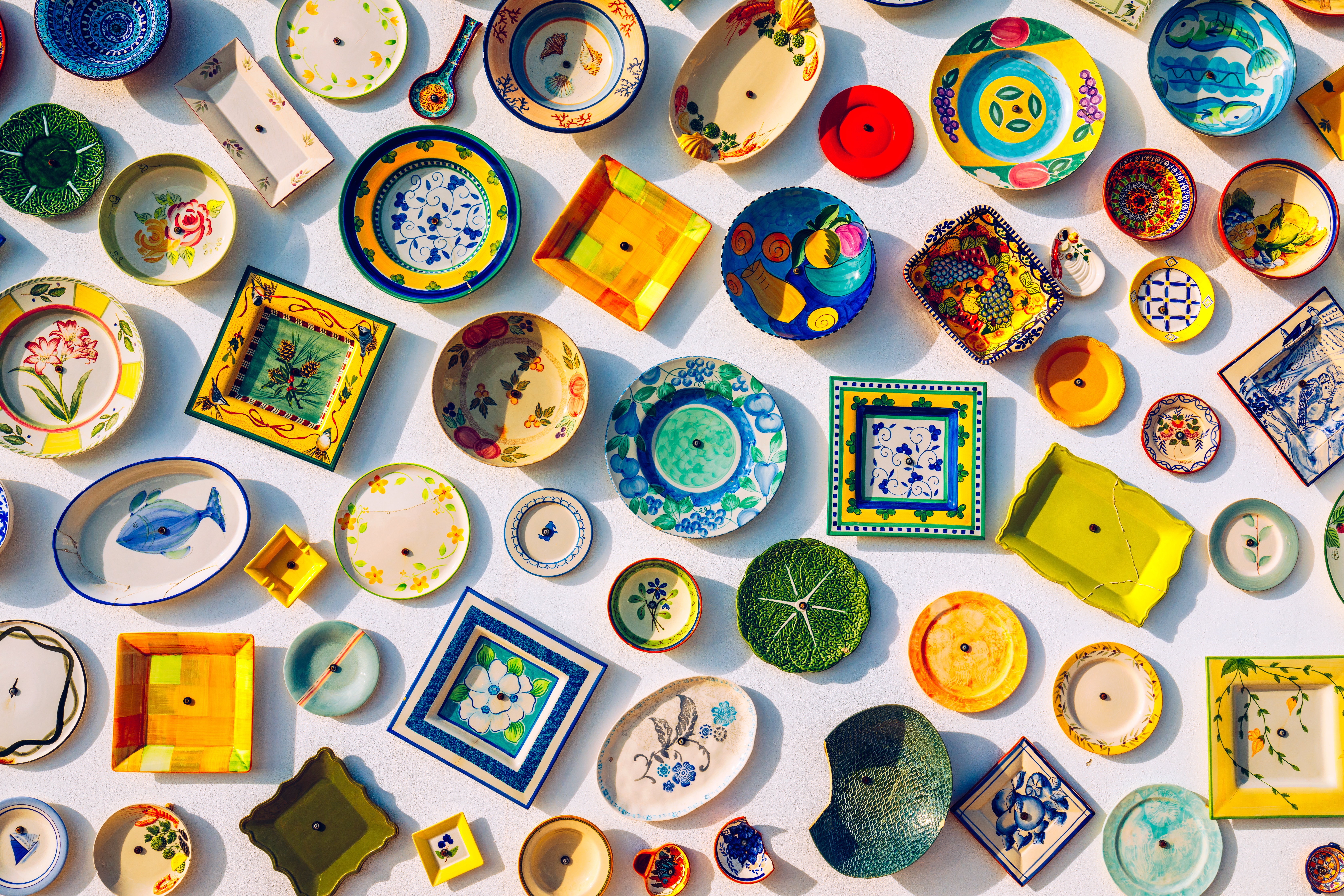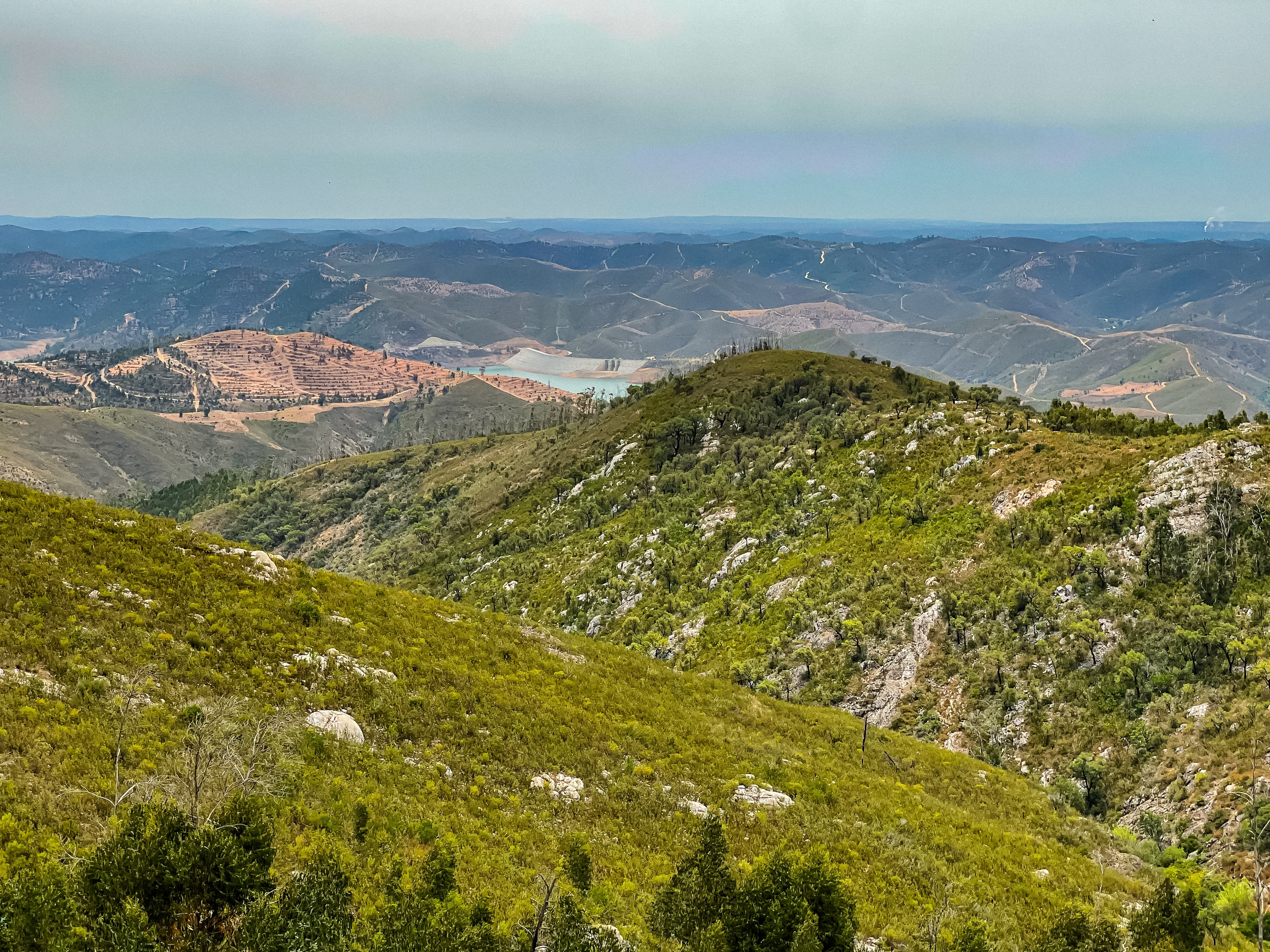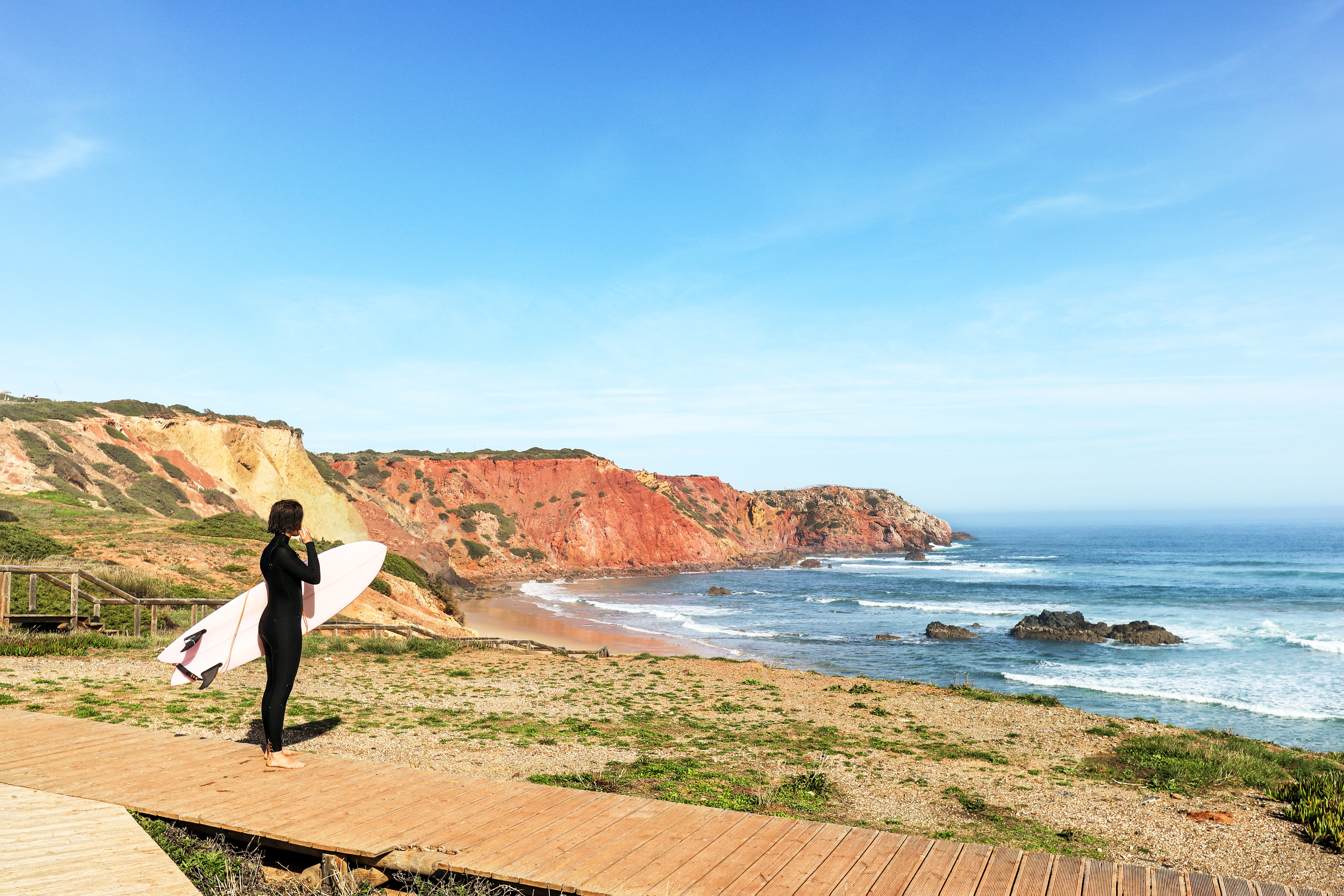Why Visit Now: The Algarve
Renowned for its rugged coastline, the Algarve has long been a favorite summer destination for Europeans. But this region of southern Portugal is more than just sun-soaked beaches: discover ten reasons to travel now, from scenic hikes to starred cuisine.
The sun-drenched region of the Algarve in southern Portugal is for many the first entry point to the country. With the opening of Faro’s airport in the 1960s, the flow of visitors increased dramatically, putting the region under the international spotlight.
Small fishing villages have since grown into bustling resort towns such as Albufeira and Vilamoura, and the accommodation choices are expanding with places like the five-star São Rafael Atlântico, but also rural estates such as Quinta de Cima.
The same can be said about the culinary scene, which includes a mix of traditional restaurants and upscale spots like the recently-opened Vivant, Austa, or Numa. On top of that, you’ll also encounter handmade crafts, scenic trails, and regional treats like olive oil and medronho. Below, we share 10 experiences you can’t miss in the Algarve.
1. Algarve’s Artisans

Hand-woven baskets, copper pans, and wooden stools are some of the traditional crafts of the Algarve.
You can find them in local souvenir stores dotted around the region or meet the artisans directly in their workshops. Places like Porches, for example, have become a hub for ceramicists. For over fifty years, ceramic artists have been gathering in the Porches Pottery to mold bowls, jugs, and plates, all of which are painted by hand. Textile art is also common here, and many artists like Jane Preza and Maria Pratas can welcome you inside their studios.
Sadly, some of the ancient techniques are fading, but projects like Projecto Tasa, run by João Ministro, are doing their best to keep these alive. They regularly host workshops and invite young designers to create new products based on traditional crafts. Many of these creations are then sold online or in their small store in Loulé.
2. Mad for olive oil
Olive groves are found all over Portugal, but especially in the south, where the summers are long and hot.
The Portuguese love their olive oil, either poured on top of bacalhau (codfish) and octopus or served on its own as a dip for homemade bread.

Many olive farms in the Algarve are open to visitors, allowing you to explore the groves up close and learn more about the olive oil-making process. Monterosa, for example, organizes weekly tours, which include a visit to their mill and an olive oil tasting. Meanwhile, places like Quinta dos Sentidos combine their olive oil production with winemaking, allowing you to get a taste of both.
[Photo: Shutterstock]

3. A village between borders
There are many ways to cross the border between Portugal and Spain, but perhaps the most thrilling is a 2,360-foot zip line connecting Alcoutim to Sanlúcar de Guadiana. The Límite Zero experience starts on the Spanish side, which you can reach via boat. Participants will then slide over the Guadiana River at about 45 miles an hour before reaching Alcoutim, a picturesque town on the eastern edge of the Algarve.
Once here, you can take your time strolling between the whitewashed buildings and visiting the medieval castle on top of the hill. This area comes alive during the Festival do Contrabando, a biannual event that connects the two riverside towns with a series of events. The main attraction is a temporary bridge allowing you to cross the borders at a lower level.
4. Island heaven
Off the coast of the Algarve is a string of small islands that make up the Parque Natural da Ria Formosa. This protected nature reserve is one of the country’s most important wetlands, providing a safe nest for birds and many fish species. The beaches here are often quieter than the bustling resort towns of Albufeira or Vilamoura.
Parque Natural da Ria Formosa.

-
As the sun dips below the horizon, the tranquil waters of Ria Formosa in Fuseta take on a myriad of soft, shimmering hues. [Photo: Shutterstock]

-
A serene gathering of flamingos wades through the tranquil waters of Ria Formosa, embracing the calm of their natural habitat. [Photo: Shutterstock]

-
Overlooking the breathtaking cliffs and azure waters of Ria Formosa, this coastal landscape captures the rugged beauty of Portugal's southern coast. [Photo: Marcin Krzyzak]
Nestled between the sea and the river, you’ll find five islands with paradisiacal beaches. You can access these from Faro, Olhão, and Tavira. The Tavira island and Culatra offer the biggest area and facilities, but if you want something a bit more secluded, you can head to Ilha de Cabanas or Ilha da Barreta. Meanwhile, Ilha da Armona is a favorite spot for watersports like kayaking and sailing.
5. Deep in the mountains
The beach is the first thing that comes to mind when you think of the Algarve, but this is also a region of mountains and lush forests.
The Serra de Monchique is the region’s highest mountain, at nearly 3,000 feet high. Meanwhile, the Serra do Caldeirão has the largest range separating the Algarve from the neighboring region of the Alentejo.
It’s worth driving up to the viewpoints dotted along the road to take in the views. Some of my favorites include the Miradouro do Caldeirão (the swing here makes for a great photo op) and the Miradouro da Fóia.

Another option is to follow one of the numerous hiking trails through the mountains. The most recent one is the Passadiço do Barranco do Demo, a wooden walkway that starts at the Alferce village and takes you through a canyon amidst the Serra de Monchique.
6. Shooting for the stars
The fine dining scene in Portugal is growing, with young chefs reinterpreting traditional recipes, but also mixing in flavors from around the world. While most Michelin-star restaurants are located in the capital, you’ll find a handful of them in the Algarve. In February 2024, the region hosted the first Michelin Star Revelation Gala solely dedicated to Portuguese restaurants.
Local chefs such as João Oliveira from Vista (Portimão) and Dieter Koschina from Vila Joya (Albufeira) were chosen to curate the gala’s menu.
Oliveira likes to focus on sustainability, using locally caught fish and seafood at his restaurant overlooking Praia da Rocha.
Austrian-born Koschina, on the other hand, combines Portuguese ingredients with Central European cooking influenced by its roots. While most restaurants are located near the big resort towns, you’ll also find some near smaller villages, like A Ver Tavira in Tavira or Gusto in Almancil.
7. A trail to remember
Sandstone cliffs, pine forests, and crystal clear waters make up the Algarve coast. One of the best ways to experience this unique landscape is to follow the Percurso dos Sete Vales Suspensos, a 3.7-mile trail connecting the beaches of Praia da Marinha and Praia de Vale Centeanes in Lagoa. Along the way, you’ll enjoy front-row sea views and spot striking rock formations like the Algar de Benagil.

If you’d rather see hilltop villages and mountains, you’re best off hitting the Via Algarviana. This 186-mile trail takes you across the inland Algarve. Starting in Alcoutim in the east and ending all the way in Sagres in the west. You can follow the trail in stages or take one of the shorter circular routes that can be completed in a day. [Photo: Shutterstock]

8. Farmland and an ancient liqueur
Locals say the Algarve has the sweetest oranges. And you’ll understand why once you see the hundreds of orange trees planted across the region.
You’ll spot them beside the train tracks, along small regional roads, or surrounding rural estates like Quinta dos Perfumes, a four-star hotel occupying a country house near Tavira. While most farms are private, some, like Quinta Santo Estevão, are open to visitors, allowing you to participate in the harvest.
Near the mountains, you’ll find rows of medronheiros (strawberry trees). The fruit obtained from these is used to produce aguardente de medronho, a strong spirit typical of the Algarve. Most of it is still made using ancient techniques such as wood fire and copper stills.
9. Sweet cravings
Fig, almond, and carob are the main ingredients used in traditional Algarve sweets.
Every town has its own delicacy, but some sweets can be found all over the region. These include the doce fino, a marzipan-style sweet with colorful depictions of fruit or animals, and the Dom Rodrigo, which combines egg yolks, almonds, sugar, and cinnamon.
You can sample these at most pastelarias (pastry shops), but if you want an overview of these in one place, I recommend heading to Doçaria do Sul in Silves. Besides selling a wide range of traditional sweets, this local shop hosts culinary experiences, allowing you to whip your own batch of doce fino miniatures and other treats.
10. In and out of water
If you’re into watersports, the Algarve is the perfect place for you. Head to the west coast to chase the waves in Sagres or Arrifana, where you’ll find most surf schools.
Kayaking and standup paddling are also popular, especially around the picturesque caves of Lagos and Lagoa.

The crystal clear waters make the Algarve a perfect spot for snorkeling, as well as diving. In Portimão, for example, divers can spot old vessels of the Portuguese navy within the Ocean Revival Park. More recently, Alexandre Farto, a renowned Portuguese street artist who goes by Vhils, created his first underwater exhibition in partnership with EDP. The EDP Art Reef features 13 pieces made from repurposed materials of former power stations. You can tour the grounds by booking a tour with a certified diving company.
Beyond the coast, you can swim on river beaches amidst the trees or enjoy a soothing bath near the salt pans, Salinas do Grelha, nicknamed Portugal’s “dead sea.” ||
